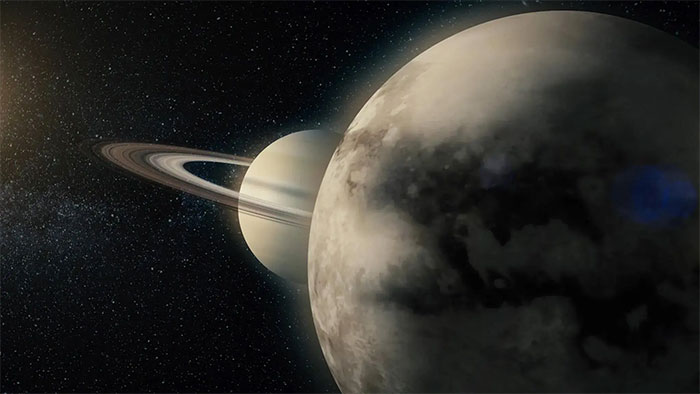Titan, Saturn’s largest moon, has long fascinated scientists with its Earth-like features and the tantalizing possibility of hosting extraterrestrial life. Recent research, spearheaded by Dr. Sander Goossens from NASA’s Goddard Space Flight Center, has leveraged data from NASA’s Cassini spacecraft to deepen our understanding of Titan’s internal composition and potential habitability.
The Cassini mission, culminating in 2017 with a controlled dive into Saturn’s atmosphere to avoid contaminating moons like Titan and Enceladus, provided crucial data through precise radar measurements and observations of Titan’s gravitational interactions. These observations, meticulously analyzed by Dr. Goossens and his team, have revealed compelling evidence for the existence of a subsurface ocean beneath Titan’s icy crust.

Previous hypotheses suggested that Titan’s subsurface ocean, if it existed, would be separated from the moon’s rocky core by a thick layer of ice, hindering the exchange of organic materials crucial for life’s emergence. However, new findings indicate that this icy barrier may be thinner than initially theorized, potentially facilitating the transport of organic molecules from Titan’s core to its surface. These molecules are essential building blocks for life as we understand it.
Dr. Goossens explains, “The organic molecules that this process can produce are considered to be important ingredients for the emergence of life.” This revelation significantly bolsters the case for Titan’s habitability and underscores its status as a prime target for future exploration missions.
Numerical simulations based on Cassini’s data suggest that Titan’s interior likely harbors a substantial ocean composed of water with traces of ammonia. This scenario not only supports the notion of Titan as a “second Earth” in terms of its geological features but also raises intriguing possibilities for the presence of microbial lifeforms adapted to extreme conditions.
The study, detailed in Nature Astronomy, highlights the importance of ongoing research efforts aimed at unraveling Titan’s mysteries. Future missions planned by NASA, specifically designed to explore Titan’s surface and subsurface, are poised to build upon these discoveries. These missions will utilize advanced technologies to further probe Titan’s ocean and assess its potential for hosting life beyond Earth.
Titan’s landscape, observed by Cassini to resemble Earth with lakes, rivers, and mountains, is indicative of dynamic geological processes that may be driven by interactions between its subsurface ocean and the moon’s icy crust. Understanding these processes is crucial not only for planetary science but also for gaining insights into the broader question of life’s prevalence in the universe.
Dr. Goossens’ team’s findings have galvanized scientific interest in Titan, renewing optimism about the search for extraterrestrial life within our own solar system. The data-driven approach employed underscores the importance of space missions in unraveling the mysteries of celestial bodies like Titan, which hold clues to our cosmic origins and potential futures.
In conclusion, Titan’s subsurface ocean represents a beacon of hope in the quest for understanding our place in the universe. As scientific advancements continue to unfold, Titan stands as a testament to the boundless possibilities awaiting exploration beyond Earth. NASA’s forthcoming missions promise to delve deeper into Titan’s secrets, promising exciting discoveries that could reshape our understanding of life itself.